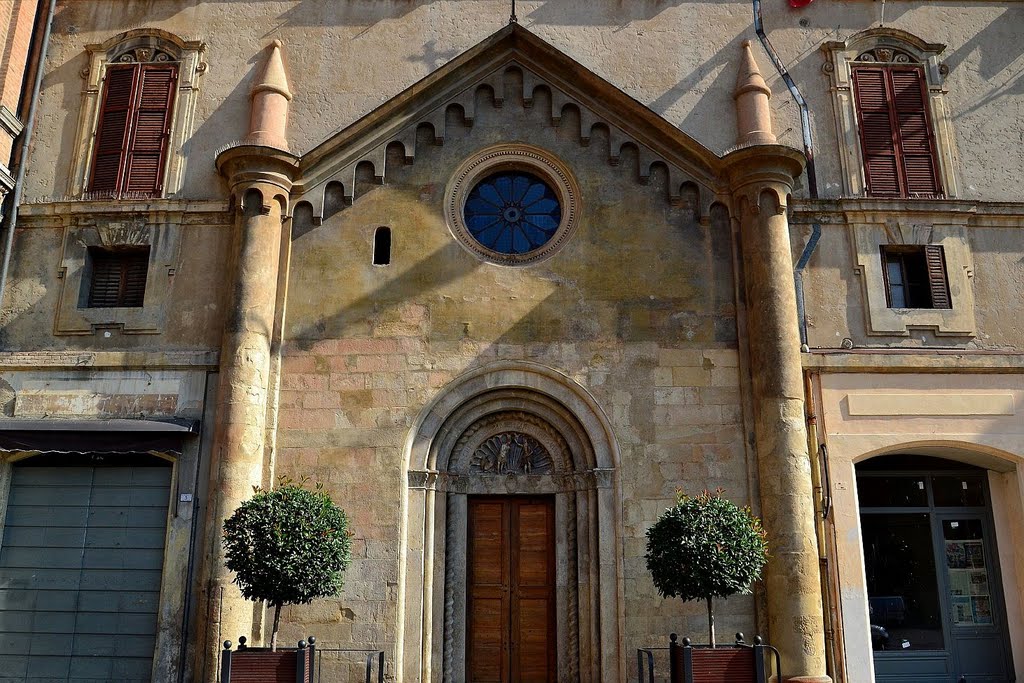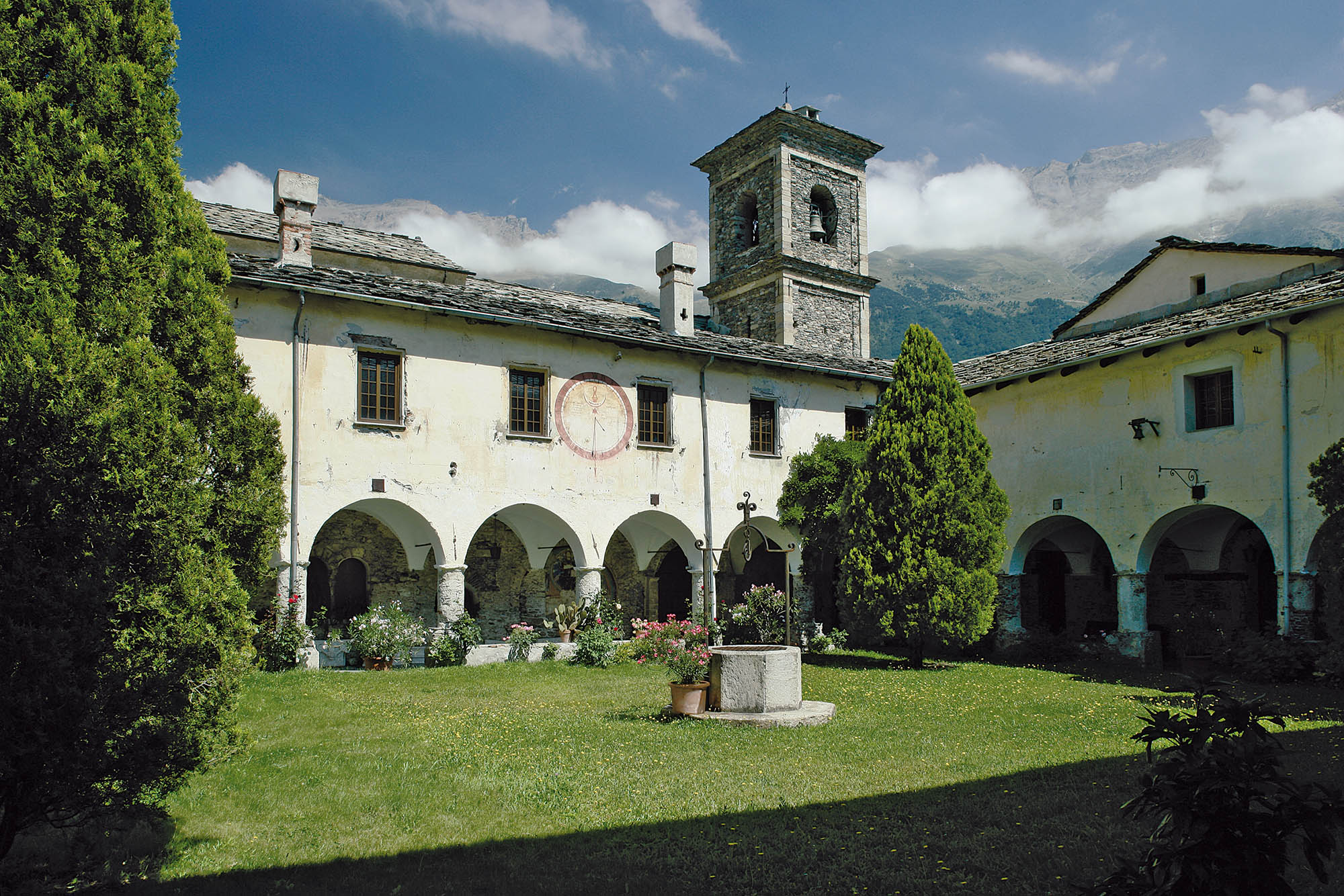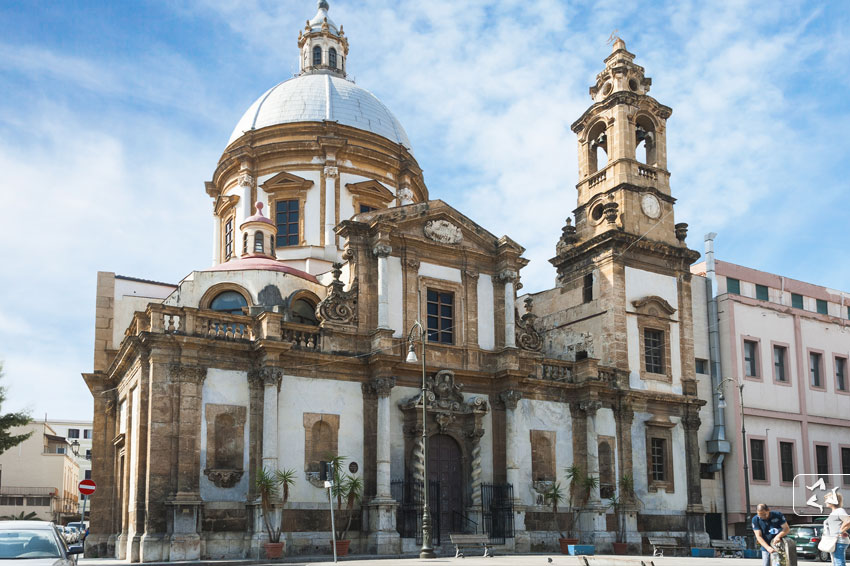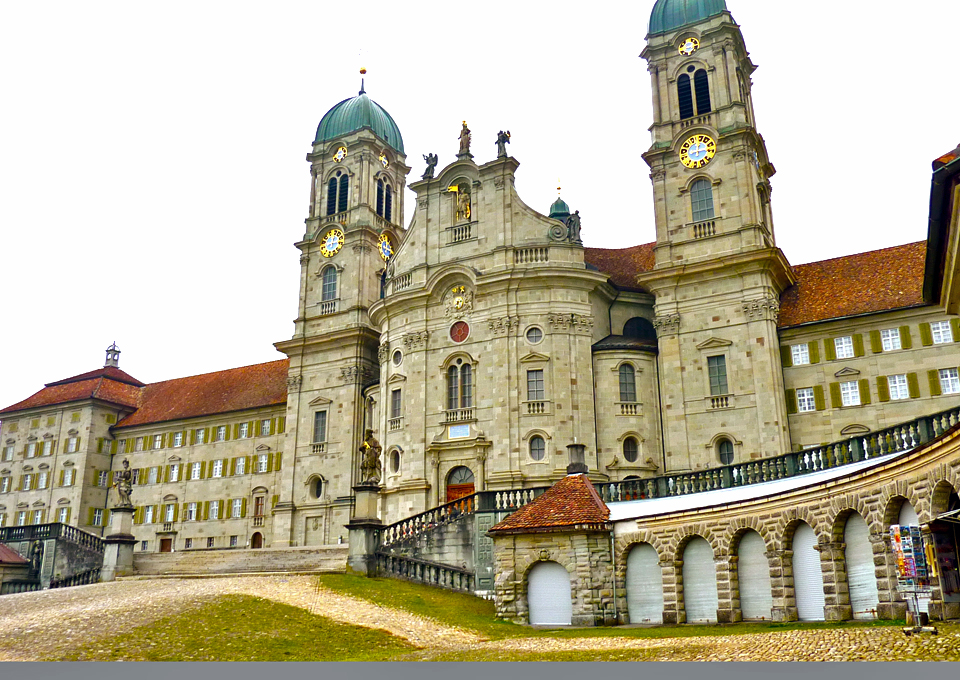The early foundation of the Baptistery dates back to 1040 or 1049. The building is characterized by a Latin cross plan, in the centre of which was the baptismal font. Remarkable the transformations made at the end of the fifteenth century by the Bishop of Reggio Bonfrancesco Arlotti to whom we owe the Renaissance adaptation of the facade (where stands out, above the portal, the lunette where the Baptism of Christ is carved) and the incorporation in the Bishop’s Palace. Inside is the important fresco with the Baptism of Christ, painted by Francesco Caprioli in 1497-98 (with the probable collaboration of the Milanese Cesare Cesariano for the architectural part) and the baptismal font in red Verona marble with marble panels (1494).
Outside the Baptistery, on the left column, the reference points for commercial measurements are still visible: the "reggiano" arm; which corresponded to 0.641 m and the "pertica" at six arms of 3.846 m. Hence the popular saying "St. John shows the deceptions". The metric system was introduced with the Law of 27 October 1803 and of the old measures of Reggio still only the agrarian one is used today, the biolca, corresponding to 0.2922 hectares.













